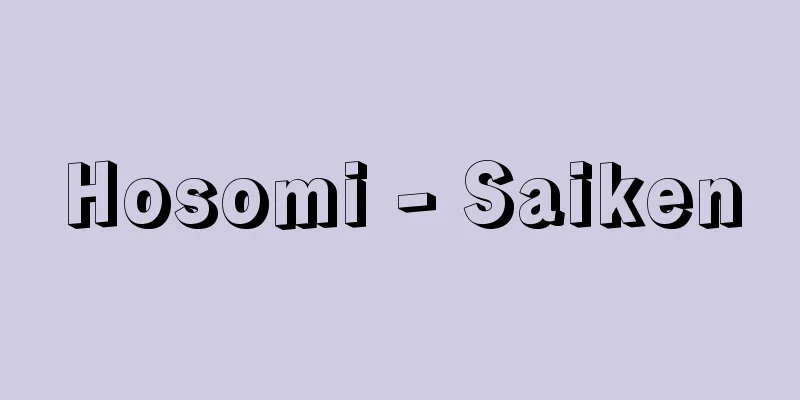Rikugien Garden

|
Located in Honkomagome 6-chome, Bunkyo-ku, Tokyo, this famous garden features a stroll-style artificial hill and a pond. It began in 1695 (Genroku 8) when Senior Councilor Yanagisawa Yoshiyasu created a garden and a villa on land in Komagome Someimura that he received as a second residence from the 5th shogun, Tokugawa Tsunayoshi. Since Tsunayoshi was invited to the garden in November 1701, it is believed that the garden was already completed at that time. The garden was named by Yoshiyasu himself after the six meanings of the classification of poetry found in the preface to the Chinese "Book of Songs." After his death, the garden fell into disrepair, but in the early Meiji period, Iwasaki Yataro of Mitsubishi restored it as a villa, and in 1938 (Showa 13), it was donated by the Iwasaki family to the city of Tokyo, where it remains to this day. It is a Special Place of Scenic Beauty, with a total area of approximately 87,800 square meters. A large island has been created in the center of the Oike pond, with huge stones forming the Horai Stone Group, and further rock islands have been created, with reeds growing thickly on the pond's banks, but there is almost no stonework to protect the pond, giving it a naturalistic look. This design was inspired by the landscapes that Yoshiyasu, who was passionate about waka poetry, wrote about in his poems. The mountainside of the large artificial hill is reminiscent of deep, natural mountains, and here a huge stone waterfall has been created to flow down an abundant amount of water. Numerous stones are used in the flowing water to express the appearance of a deep valley, creating the most outstanding local landscape in the garden. [Shigemori Kando] A stroll-style garden with a large pond and an island in the middle. It was landscaped in the Edo period, restored by Iwasaki Yataro in the early Meiji period, and donated to the city of Tokyo by the Iwasaki family in 1938 (Showa 13). It covers an area of approximately 88,000 km. It is one of the few natural walking parks remaining in the city center, and is a place of relaxation for Tokyo residents. Nationally designated Special Place of Scenic Beauty Bunkyo Ward, Tokyo © Tokyo Convention & Visitors Bureau "> Rikugien Garden Source: Shogakukan Encyclopedia Nipponica About Encyclopedia Nipponica Information | Legend |
|
東京都文京区本駒込(ほんこまごめ)6丁目にあり、回遊式築山(つきやま)泉水の名園。1695年(元禄8)老中柳沢吉保(よしやす)が5代将軍徳川綱吉(つなよし)から中屋敷として拝領した駒込染井村の地に、別業と庭園をつくったのに始まる。1701年11月に綱吉を園に招いているから、すでにそのころ完成していたと考えられる。名称は、中国の『詩経』大序にある詩の分類法の六義にちなみ、吉保自身の命名したもの。彼の没後荒廃していたが、明治初年に三菱(みつびし)の岩崎弥太郎(やたろう)が別邸として復旧、1938年(昭和13)岩崎家から東京市に寄贈され、現在に至る。特別名勝で、総面積は約8万7800平方メートル。大池泉に中島を大きくつくり、巨石で蓬莱石組(ほうらいいわぐみ)を構成、さらに岩島をつくり、池畔にはアシを繁茂させているが、護岸石組はほとんどなく、自然主義的である。これは、和歌に熱中した吉保の、歌に詠まれた景観からの意匠である。また、大築山の山畔は自然の深山を思わせるもので、ここに巨大な滝石組をこしらえ、豊かに水を流し落とす。その流れには多数の石を用いて、深い渓谷の様相を表現、本園中のもっとも優れた局部的景観となっている。 [重森完途] 大池泉と中島を中心とした回遊式築山泉水庭園。江戸時代に造園され、明治初年に岩崎弥太郎が復旧、1938年(昭和13)岩崎家から東京市に寄贈された。面積約8万8000km。都心に残された数少ない自然散策公園として都民の憩いの場となっている。国指定特別名勝 東京都文京区©公益財団法人東京観光財団"> 六義園 出典 小学館 日本大百科全書(ニッポニカ)日本大百科全書(ニッポニカ)について 情報 | 凡例 |
Recommend
Osatsuma Bundayu - Osatsuma Bundayu
…His books include “How to Sing Nagauta” and “How...
Mount Carmel
A hill range stretching from Cape Carmel, which fo...
Ravachol (English spelling)
1859‐92 French anarchist. His real name was Franço...
Carlos Fonseca Amador
...This movement, named after AC Sandino, a Nicar...
Uncle
...Nephews and nieces are a type of collateral re...
Kabe Island
This island is located in the northwest of Saga P...
Flour milling
This refers to the process of crushing raw materi...
Spyros Skouras
...They developed a film-based sound-on-film proc...
Satire
…Unlike simple criticism or accusation, it is oft...
Mr. Absence - Rusuuji
A warrior of the Mutsu Province in the Middle Ages...
Trevi Fountain - Trevi Fountain
This fountain is located in Trevi Square in Rome, ...
Kifugetto - Kifugetto
...The flowers are white and fleshy, with lip-lik...
Suga genius - Kanshusai
Joruri Sugawara's teachings and handwriting Su...
Candlenut tree
…Also known as oil tree, poisonous perilla, candi...
Great Nanban Giseru - Great Nanban Giseru
An annual plant of the Orobanchaceae family (APG ...









